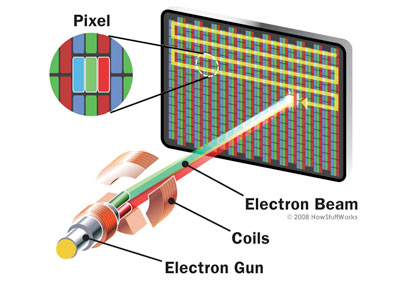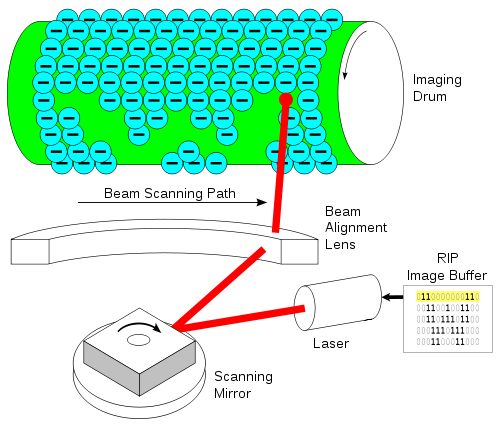Output Mediums, (or ootput mediums, if your from Canada)
CRT, or Cathode Ray Tubes were widespread mere years ago, but since then, thinner display technologies have emerged. However, since computers were pairt with CRT monitors for the longest time, we will take a look at the inner working of them. CRT monitors (or televisions) have three vital components to them. First is a source of electrons, a stream of electrons, accelerated from what we usually call an electron gun. Secondly is a way of directing the beam a certain direction. Third is a surface to fire them at.

Image D: A diagram of a cathode ray tube setup.
Our electrons are fired from the electron gun toward the screen. As the hurtle toward the screen they pass through a set of focusing coils, to focus the electron beam into a finer stream. After that , the electrons than pass through a set of deflection coils. These deflection coils create a magnetic feild that can be varied, in order to steer the electron beam in a certain direction. After being steer in the desired direction, the electrons continue hurtling toward the phosphor covered screen. When the electrons crash into the screen, the charge particles cause the phosphorescent material to glow.

